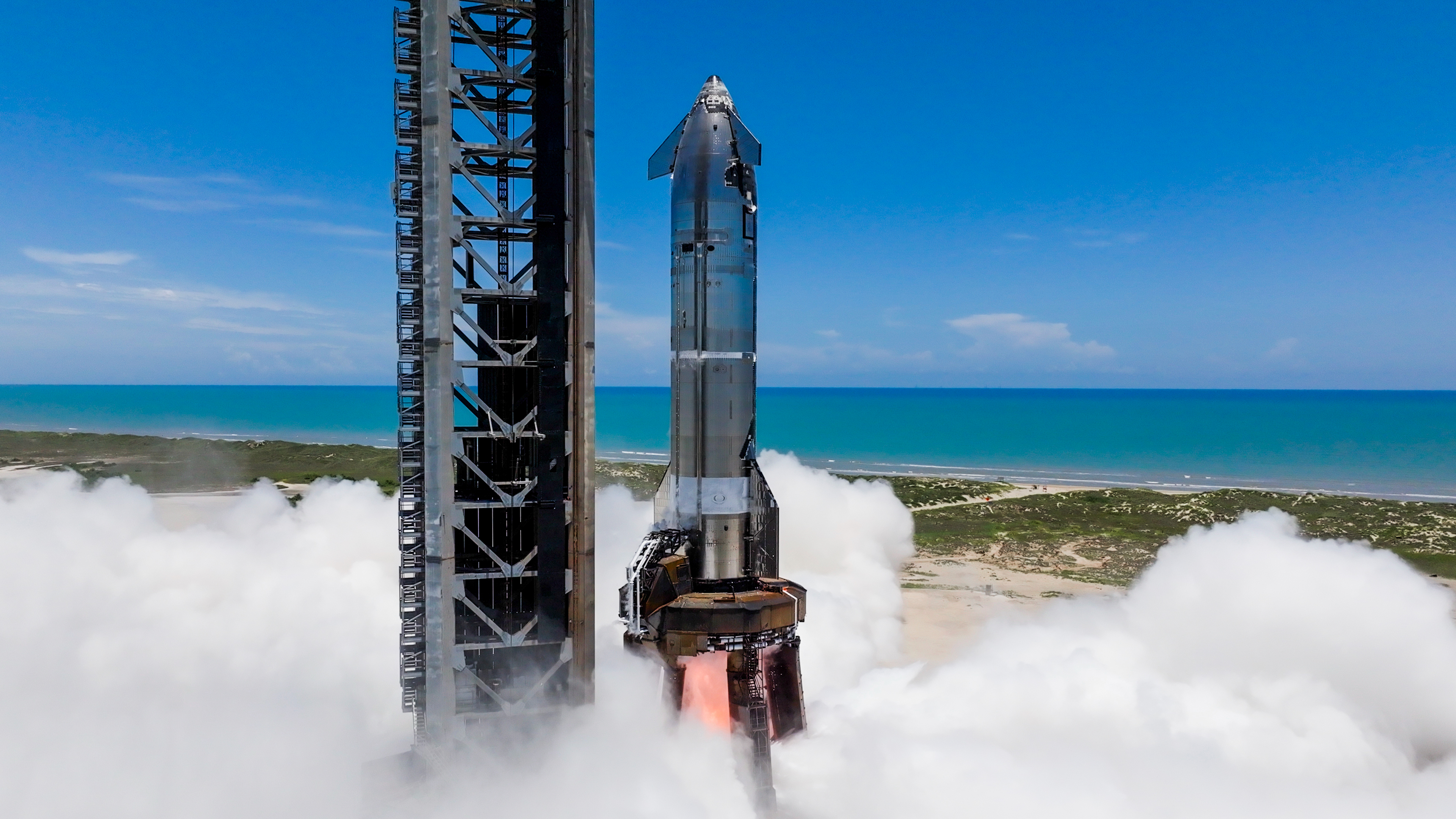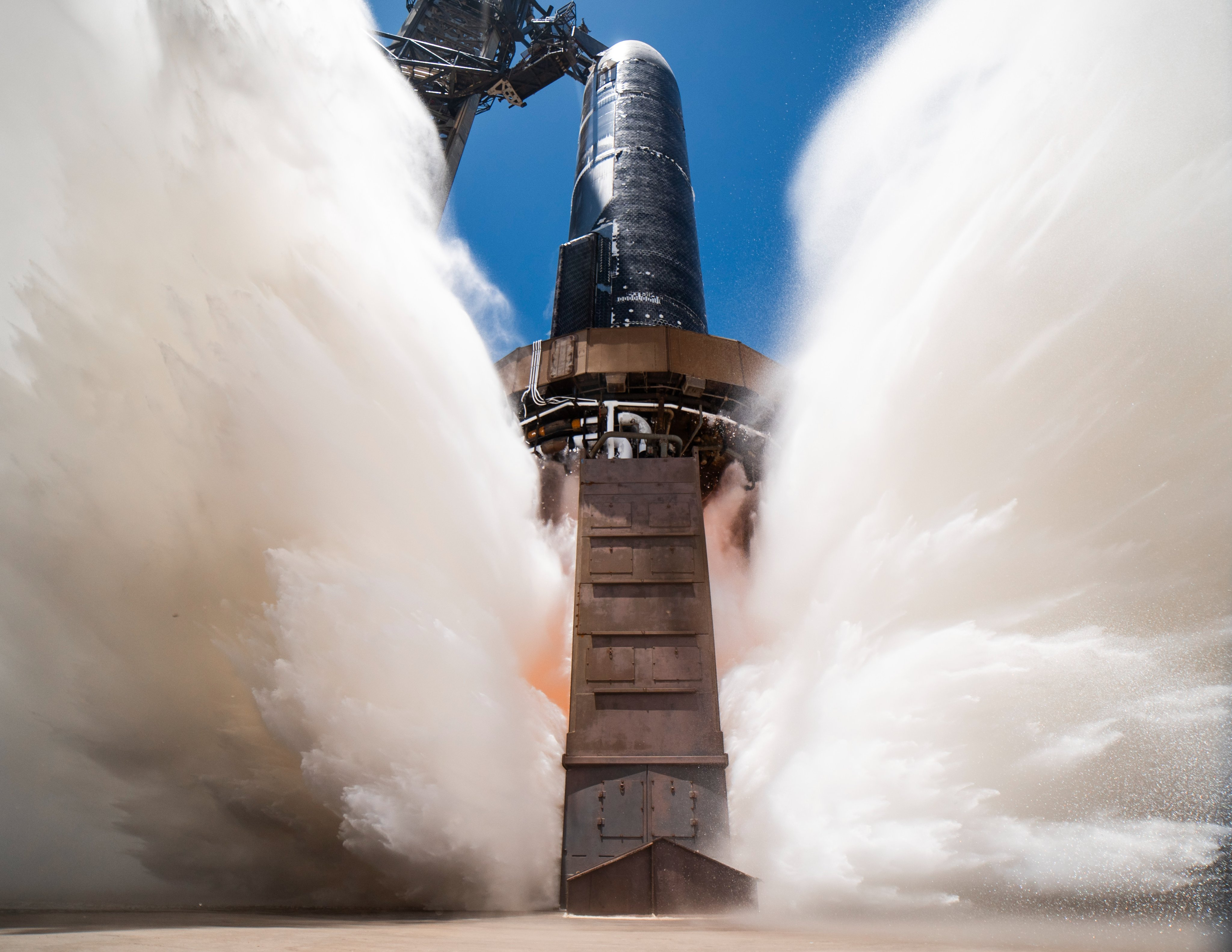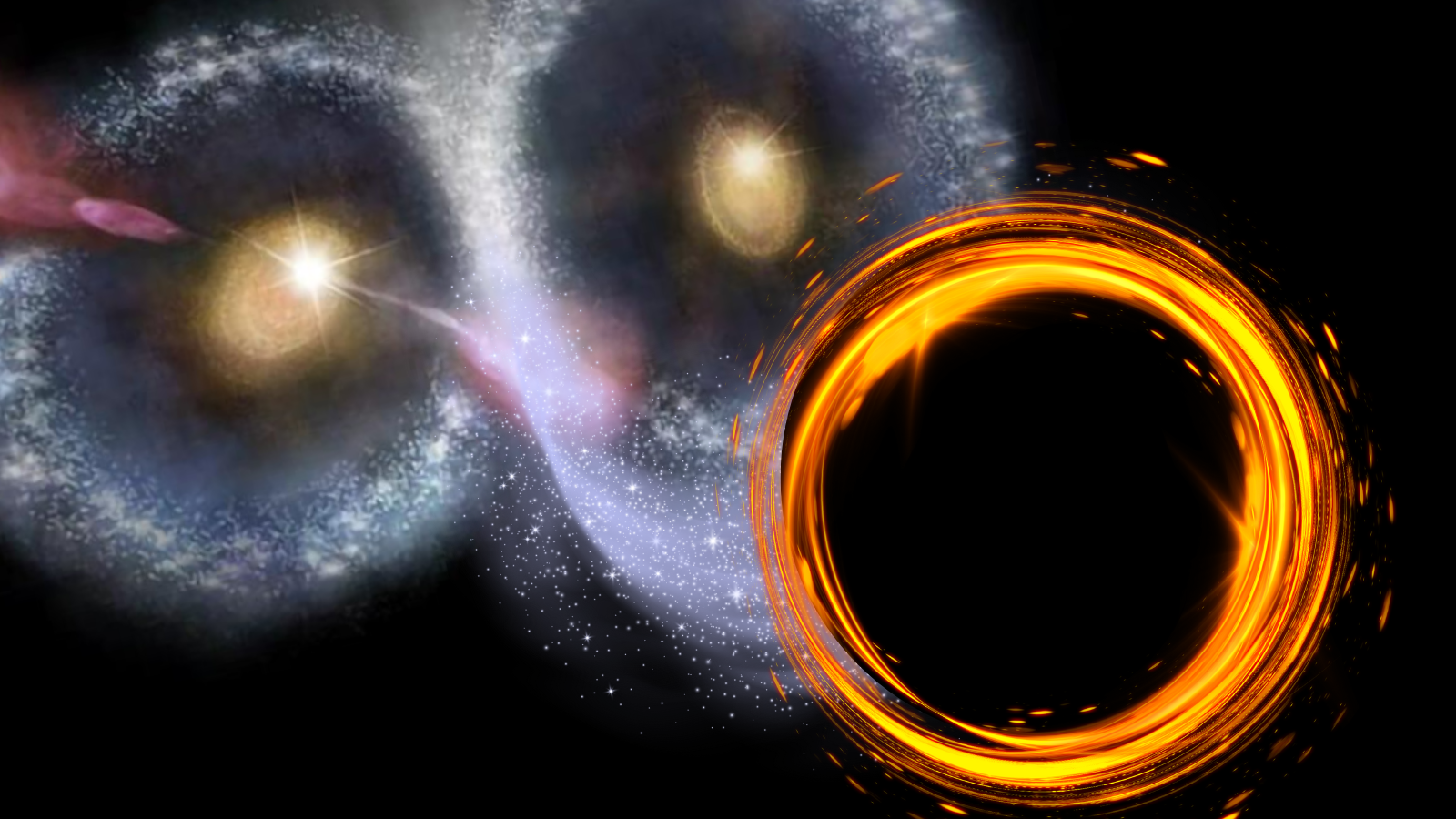SpaceX fires up Starship spacecraft ahead of 10th test flight (video, photos)
SpaceX just fired up its newest Starship spacecraft on Thursday (July 31), to help prep the vehicle for an upcoming test flight.
The company conducted a "static fire" trial with the 171-foot-tall (52 meters) Starship upper stage at its Starbase site in South Texas on Thursday, briefly igniting one of the vehicle's six Raptor engines.
"Starship single-engine static fire demonstrating an in-space burn complete on Pad 1 at Starbase," SpaceX wrote in a Thursday evening X post that shared two photos and a video of the milestone.

The test is part of the prep work for Flight 10 of Starship, the huge, fully reusable rocket that SpaceX is developing to help humanity colonize Mars and do a wide variety of other spaceflight work.
Starship consists of two elements — the upper-stage spacecraft, called Starship or simply Ship, and a huge booster known as Super Heavy. Both are made of stainless steel and are powered by Raptors (33 of them in Super Heavy's case).
This particular Ship is the second that SpaceX has earmarked for Flight 10. The first exploded on a test stand at Starbase on June 18 just before a planned static-fire test.
The Super Heavy that will fly on Flight 10 has already passed its static-fire test, igniting all 33 of its engines on June 6.
Breaking space news, the latest updates on rocket launches, skywatching events and more!

SpaceX has not yet announced a target date for Flight 10, but we may not have to wait long for it: company founder and CEO Elon Musk has said the test mission will launch in August.
A fully stacked Starship first flew in April 2023. The huge rocket has launched three times so far this year, in January, March and May. On all three flights, SpaceX lost the upper stage before its planned Indian Ocean splashdown.

Michael Wall is a Senior Space Writer with Space.com and joined the team in 2010. He primarily covers exoplanets, spaceflight and military space, but has been known to dabble in the space art beat. His book about the search for alien life, "Out There," was published on Nov. 13, 2018. Before becoming a science writer, Michael worked as a herpetologist and wildlife biologist. He has a Ph.D. in evolutionary biology from the University of Sydney, Australia, a bachelor's degree from the University of Arizona, and a graduate certificate in science writing from the University of California, Santa Cruz. To find out what his latest project is, you can follow Michael on Twitter.
You must confirm your public display name before commenting
Please logout and then login again, you will then be prompted to enter your display name.
